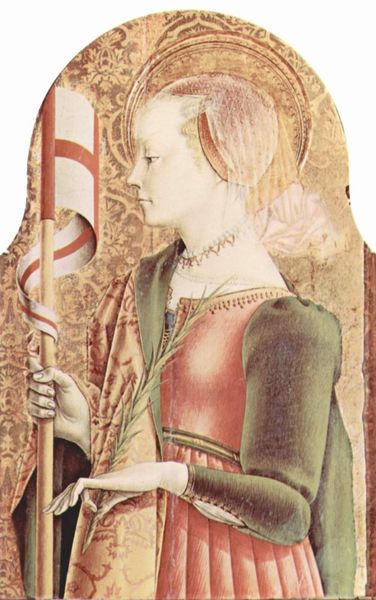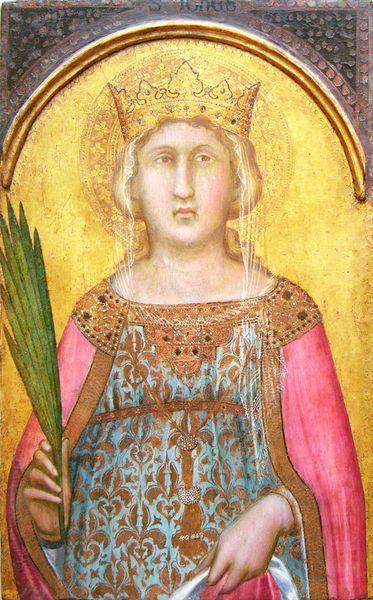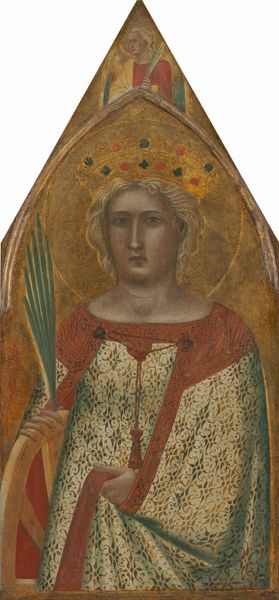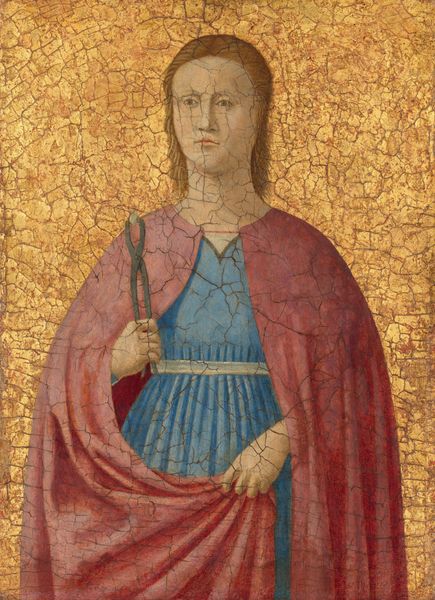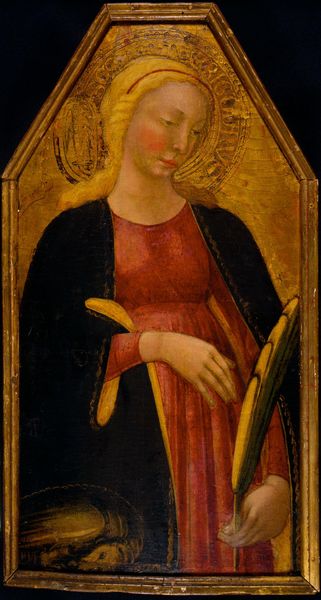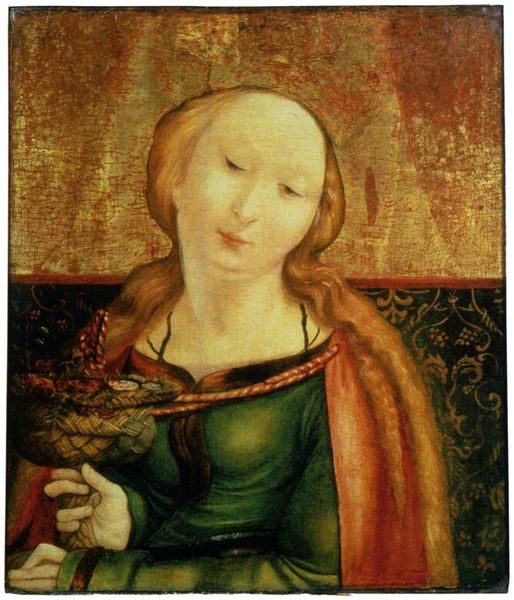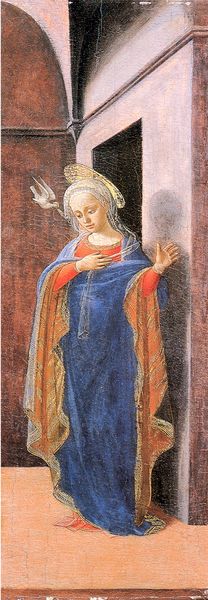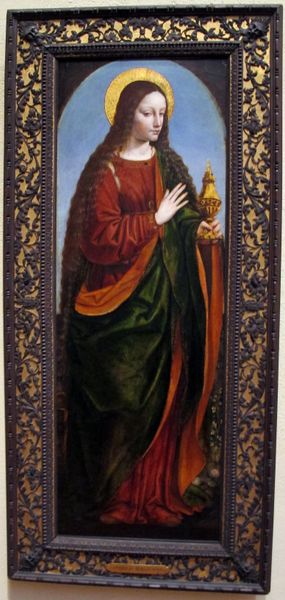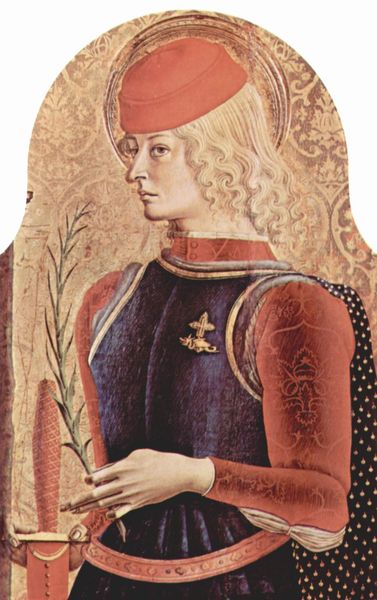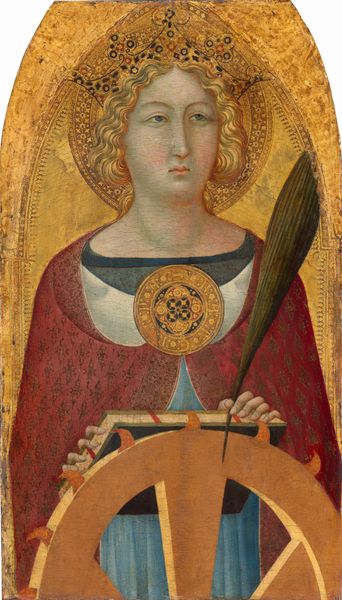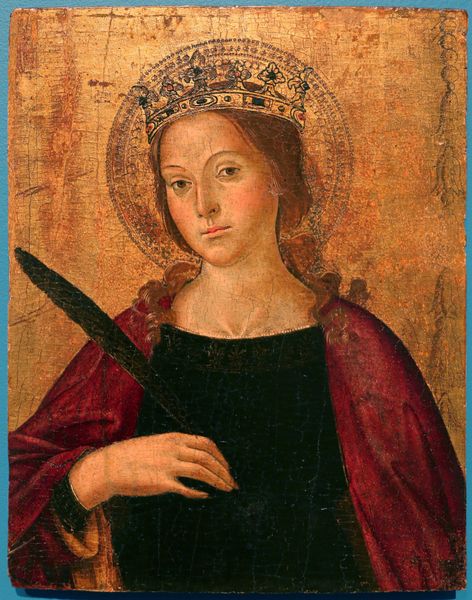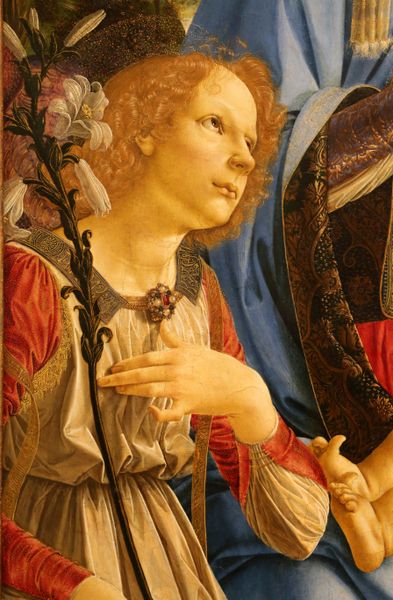
tempera, painting, oil-paint
#
portrait
#
tempera
#
painting
#
oil-paint
#
figuration
#
oil painting
#
italian-renaissance
#
early-renaissance
#
portrait art
Dimensions: 65 x 41 cm
Copyright: Public domain
Curator: Look at this portrait of Saint Catherine of Alexandria, crafted in 1473 by Carlo Crivelli using tempera and oil paints. Isn’t she striking? Editor: She certainly is! My first impression is one of serenity tinged with sadness. Her gaze is directed upwards, as if seeking solace from something beyond the canvas. What objects are at the edge of the painting? Curator: Indeed, her upward gaze invites contemplation of a higher power, one that has often eluded womxn. The objects are a fragment of her attribute wheel, a reference to her martyrdom and one often overlooked in Renaissance portraiture. But Crivelli’s rendering is complex and he also holds onto her role as the bride of Christ in the pose she holds. We must remember that the cult of female saints often positioned womxn into unattainable paradoxes that left no room for complex or multidimensional lives. Editor: Ah, the wheel. And I see now the palm frond, symbolizing victory and her status as a martyr. These symbols were easily and readily understood by the original audiences who engaged with the imagery in this portrait. Notice how her fingers curl around the leaves as though they provide her only defense. This reinforces the saint's courage and resilience in the face of unimaginable brutality. Is there an additional symbolism there too? Curator: Precisely, you highlight how these icons carry multiple meanings which also reflects her strength against both physical violence and intellectual opposition; remember, she debated the most learned philosophers of her time. But also think of the cost, where power required sainthood. Consider the historical context of female power. Editor: Of course, we must examine that double standard, that she existed both to be looked at, to provide guidance, but was not of the world, nor could she ever occupy earthly and embodied power. I appreciate how Crivelli captured a nuanced representation that evokes both strength and the tragedy. This artwork speaks to issues of representation, sacrifice, and the roles that continue to plague women to this day. Curator: Examining artworks like these invites us to think critically about how systems of power shape both how we represent and interpret historical narratives and figures of veneration and worship. It has been revealing to revisit Saint Catherine with a more nuanced lens. Editor: Agreed. Paying close attention to the symbols reveals her courage, a legacy of her presence within the visual canon and perhaps in real-world history. It's a fascinating invitation for contemplation and historical remembering.
Comments
No comments
Be the first to comment and join the conversation on the ultimate creative platform.
